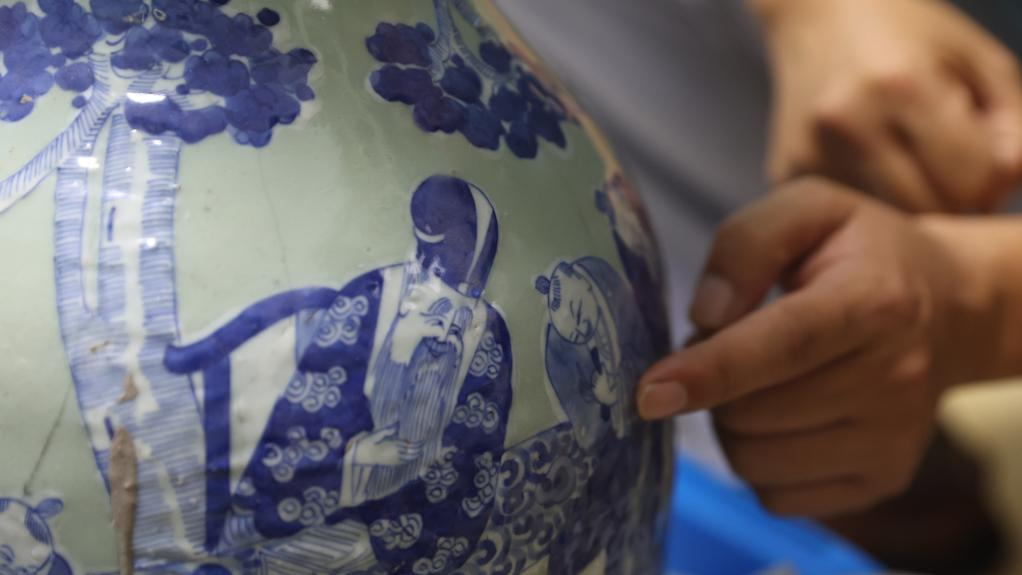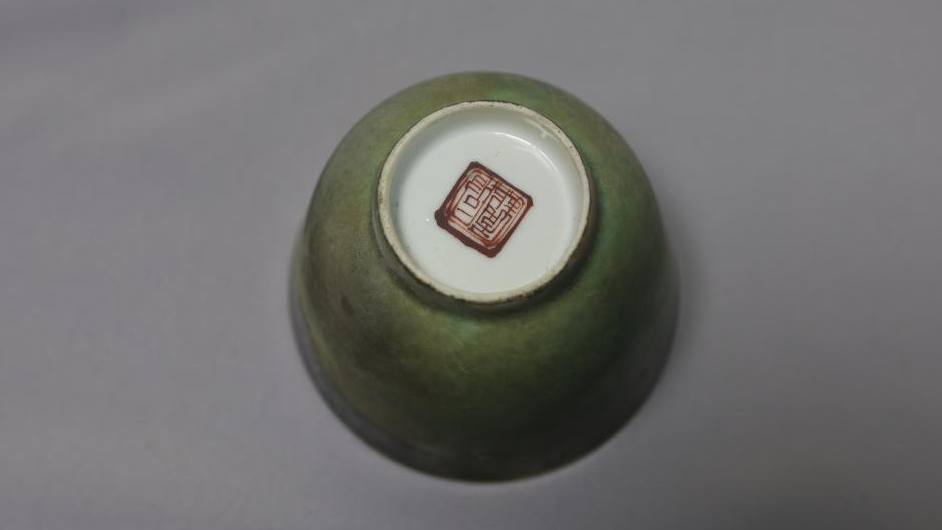
A traditional Chinese "dowry vase" from the Qing Dynasty (1644-1911) recovered from the Yangtze River Estuary No.2 project. /Xinhua
A traditional Chinese "dowry vase" from the Qing Dynasty (1644-1911) recovered from the Yangtze River Estuary No.2 project. /Xinhua
On Tuesday, the Shanghai Cultural Heritage Conservation and Research Center revealed the latest batch of artifacts recovered from the Yangtze River Estuary No.2 project, including green-glazed pottery made in Jingdezhen.
"Due to longtime seawater corrosion, this green-glazed cup appears slightly brown," said Zhai Yang, vice director of the Center. "However, it represents cultural exchange between China and the world during the early days of Shanghai's opening up as a trade port."

A green-glazed cup recovered from the Yangtze River Estuary No.2 project. /Xinhua
A green-glazed cup recovered from the Yangtze River Estuary No.2 project. /Xinhua
The salvage and relocation project is centered on one of the world's largest and most well-preserved ancient wooden shipwrecks, according to the Shanghai Municipal Administration of Cultural Heritage.
Since the project began in March, over 600 ceramic artifacts have been recovered, including exquisite porcelains made at Jingdezhen, also known as the "porcelain capital" in East China's Jiangxi Province, and hookah pots made in Vietnam.
After more than six years of underwater survey and exploration, archaeologists have confirmed Yangtze River Estuary No.2 as a wooden sailing ship from the reign of the Tongzhi Emperor (1861-1875) of the Qing Dynasty (1644-1911). The shipwreck is about 38.5 meters long and 7.8 meters wide, with 31 cabins.

